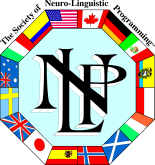NLP Embedded Commands

In NLP Embedded Commands are used rather than giving direct instructions, the NLP Practitioner embeds the directives within a larger sentence structure. You can start now to imagine the power of Embedded Commands, especially now you can begin to relax and learn even more. Embedded commands often are used in a larger sentence structure to deliver them more smoothly and gracefully. The listener will not consciously relaize the directives that have been given to him or her.
Limits of the Speaker’s Model (Generalization)

Limits of the Speaker’s Model is the Third part of the Inverse of the Meta Model. Remember that the Meta Model is used to search for and reveal Generalized information. Here we are going to discover the Two parts it is been made of. Now in the Meta Model we learned to ask the questions to discover what has been generalized by the client. In the Milton Model we, as the NLP Practitioner, we are utilizing to deliberately generalize information and provide suggestions with it. This part, Limits of the Speaker’s Model, is the least significant of the three chunks of information. So study it closely, in the end it will make the utilization of the Milton Model only easier.
Presuppositions

We have learnt in the Meta Model that Presuppositions are basically – “What is the person assuming to be true, underneath what they are actually telling me?”. Presuppositions are not necessarily true, but even if the are not, by holding something not-yet-true as being true, we can help to bring that to fruition. Now the presuppositions in relation to the Milton Model. Presuppositions are the most powerful of the language patterns, when used by a communicator who presupposes what she does not want to have questioned. A general principle is to give the person lots of choices and yet have all of the choices presuppose the response you want.
Semantic Ill-Formedness (Distortion)

Semantic Ill-Formedness is the Second part of the Inverse of the Meta Model. Remember that the we use the Meta Model here to reveal Distorted information. Here we are going to discover the Three parts it is been made of. Now in the Meta Model we learned to ask the questions to discover what has been distorted by the client. In the Milton Model we, as the NLP Practitioner, we are utilizing to deliberately distort information and provide suggestions with it. This part, Semantic Ill-Formedness, is very powerful. So study it closely, in the end it will make the utilization of the Milton Model only easier.
NLP Embedded Questions

I am curious to know what you would like to learn from reading this blogpost. In NLP Embedded Questions are a powerful way to ask questions covertly, get a response and the listener not realizing that the question was not asked directly. So at this moment I am wondering what you want to learn next? Basically this technique comes down on the fact that the listener or receiver of this message does not refuse the question, because it is embedded within a statement about the speaker’s curiosity. This is very easy to learn theory about Indirect Elicitation Patterns and in specific about Embedded Questions. I am wondering how much you are going to exercise this technique, now.
NLP Subordinate Clauses of Time

Before you start to read this article we just want to make sure we are talking about NLP Subordinate Clauses of Time. After you have finished reading this article we are sure you are more educated about this subject. So while you are reading this article we want you to start to realise you are using this Milton Model pattern already a lot and on an everyday basis in your life. Aren’t you? We want to discuss something with you before you complete reading this article. Do you want to sit down while you are reading this? A trained and well educated NLP Practitioner will know what we written down prior to this sentence.
Commentary Adjectives and Adverbs

We have gone over Adjectives and Adverbs in our previous blogposts. So that may not be any difficulty anymore. Now, in specific we are coming to Commentary Adjectives and Adverbs. Before you continue to read, we want you to know that the examples we are going to provide you proudly contain several kinds of presuppositions.. And combining all the techniques learnt will make it only more powerfull than you could imagine. Practice these examples and come up with your own. The more you practice, the more you become perfect in it. That is the goal we are aiming for.
NLP Conversational Postulates

Did someone ever asked you something like “Do you know what time it is.”? And you told them the exact time? Welcome to NLP Conversational Postulates. The most logical answer to this question is either Yes or No. Conversational Postulates typically elicit a response, rather than a literal answer. So, can you give me some more examples of Conversational Postulates now? I think you can. It depends rather now on if you provide a response or a literal answer. Are you reading this?
Adverbs and Adjectives

Adverbs and Adjectives presuppose that something is going to happen. Adverbs and adjectives add information to a verb (doing word) or noun (naming word) respectively. If I were to say “Johnny is running quickly”, “quickly” would be the adverb as it is adding more detail or qualifying the verb “to run”. The question is how will the experience be? That is the question, you, as an NLP Practitioner needs to investigate. Adverbs and Adjectives is a wonderful part of the Milton Model that helps you do your work easier and quicker. It only needs some planning. For you to experience the information below.
Universal Quantifiers

Words such as all, every, always, nobody, etc. are Universal Quantifiers. Universal Quantifiers usually indicate overgeneralization. Remember we are in the land of, Trance, Hypnosis and the Milton Model. So the usage of Universal Quantifiers should be applied in such a way. Where the Meta Model learns us to reveal deleted, distorted or generalized information, here we are going to use Universal Quantifiers to be specifically vague and provide the listener ways that produce trance as well as other outcomes. Every word you are reading here can assist you in going deeper and deeper into a beautiful trance. And so should we utilize Universal Quantifiers.


